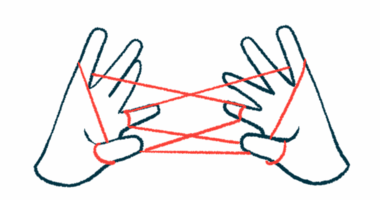Rebrain’s AI software to optimize brain targeting approved by FDA
Machine learning model to help target brain regions for lesioning techniques

The U.S. Food and Drug Administration (FDA) has again cleared Rebrain’s OptimMRI software, this time including a new machine learning model to assist in targeting specific brain regions for lesioning techniques such as MR-guided focused ultrasound and radiosurgery.
Lesioning techniques involve the destruction of small areas of abnormal brain activity.
The new software already features FDA-cleared machine learning models to assist in deep brain stimulation (DBS), according to the company. This technique involves implanting electrodes to stimulate brain regions with electrical impulses generated by a neurostimulator device. Both DBS and lesioning techniques may be used to ease motor symptoms of Parkinson’s disease, which include tremors, muscle rigidity, slowed movements, and walking problems.
OptimMRI combines artificial intelligence with MRI
OptimMRI combines artificial intelligence (AI) with MRI to aid in accurately identifying optimal targets to place electrodes or for lesioning.
The request for its approval was submitted through a 510(k) application, used to seek marketing approval for medical devices in the U.S.
“The US market represents the largest opportunity to enable personalized targeting for neurological disorders,” David Caumartin, CEO of Rebrain, said in a press release. “The ability to offer AI clinical targeting to neurosurgical suites will open many collaborations nationwide, which today are treated with DBS and MR-guided focused ultrasound.”
Parkinson’s disease is caused by the progressive dysfunction and death of dopaminergic neurons, the nerve cells responsible for producing dopamine, which is a major chemical messenger involved in motor control. This leads to issues in brain signaling and to disease symptoms.
DBS is usually offered to patients whose medication failed to fully control their symptoms, including those experiencing significant off time or dyskinesia (uncontrolled movements) associated with long-term treatment with levodopa.
In Parkinson’s patients, the procedure commonly targets the subthalamic nucleus, a brain region that integrates the basal ganglia, which are interconnected structures that facilitate and coordinate movement. The first FDA-cleared OptimMRI version features machine learning models for this region.
Newly approved version can target brain region responsible for essential tremor
The now-approved version expands the software capabilities to include part of the ventralis intermedius nucleus (VIM), a brain region that functions as a hub for sensory-motor integration. This area is also a key target for DBS in people with essential tremor, a neurological disorder characterized by tremor most commonly in the hands and arms.
Rebrain’s technology recognizes several brain structures in a semi-automatic way. Then, artificial intelligence helps predict targets and marks them on MRI, which is then verified by trained neurosurgeons. The marked brain regions are sent back to the healthcare centers to help them plan the surgical procedure.
The technology aims to simplify and standardize neurosurgical procedures, so that more patients can be treated worldwide, according to the company.
The company’s co-founders Emmanuel Cuny, MD, and Nejib Zemzemi, PhD, will present their data on targeting VIM based on machine learning on Sept. 5, at the World Society for Stereotactic and Functional Neurosurgery, held in Chicago.








